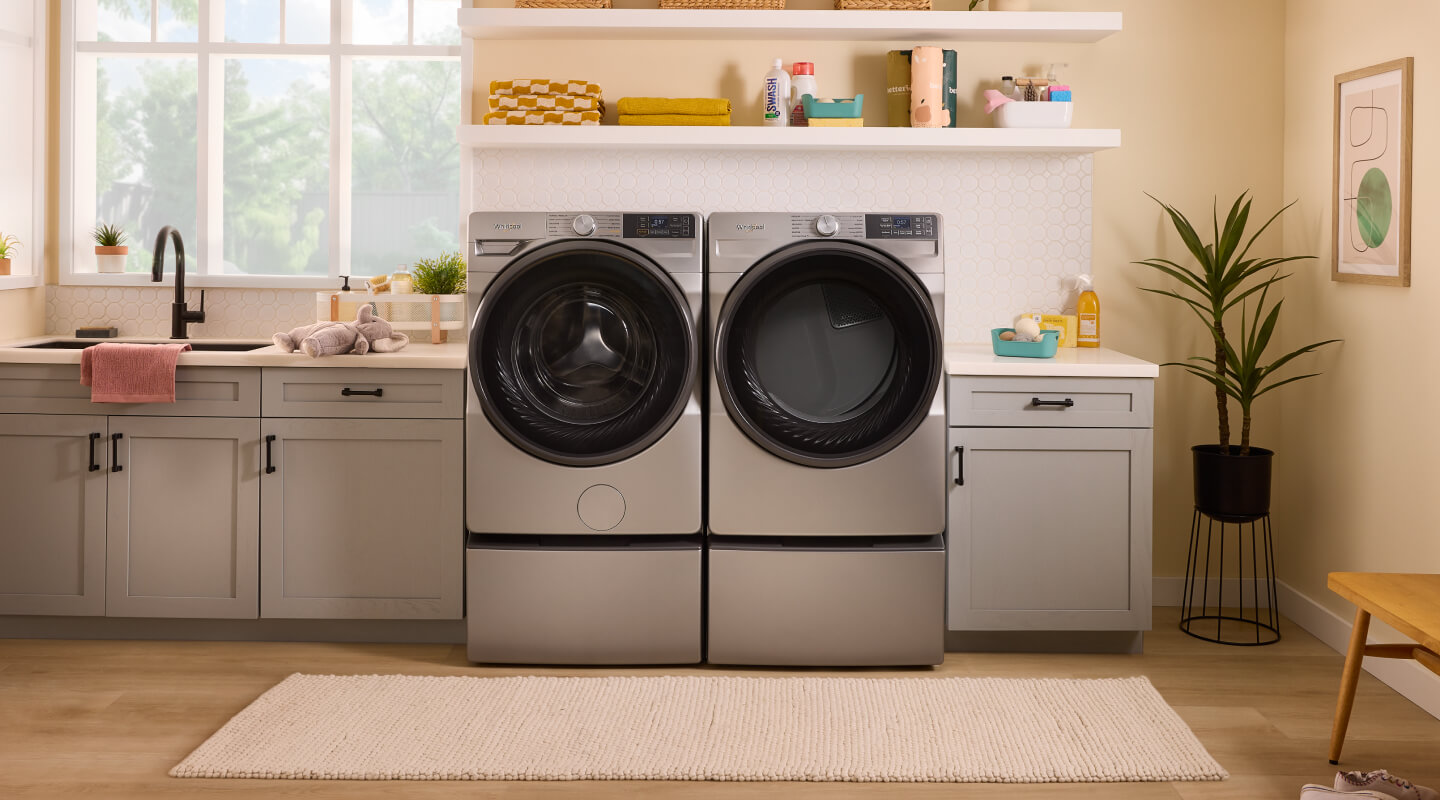
Sustainable laundry tips and practices
Reducing your carbon footprint on laundry day can be helpful to both the environment and your wallet, and incorporating sustainable practices may help you save on energy costs over time. Use this guide to explore eco-friendly laundry tips to help make your laundry routine a little greener.
12 Eco-friendly laundry tips
Making a few simple changes to your laundry routine can help you care for your family and the environment. Explore the following eco-friendly laundry practices to get started on your sustainability journey.
2. Run full loads whenever possible
Waiting to do your laundry until you have a full load can help reduce the amount of energy used throughout your laundry routine. Washing machines typically use about the same amount of energy for each load size; just be sure you don’t overload your machine.
It is important to note that your washer’s water usage can vary depending on the cycle you select. If you’re in a pinch and need to wash a smaller load, be sure to select a cycle that’s appropriate for your load size.
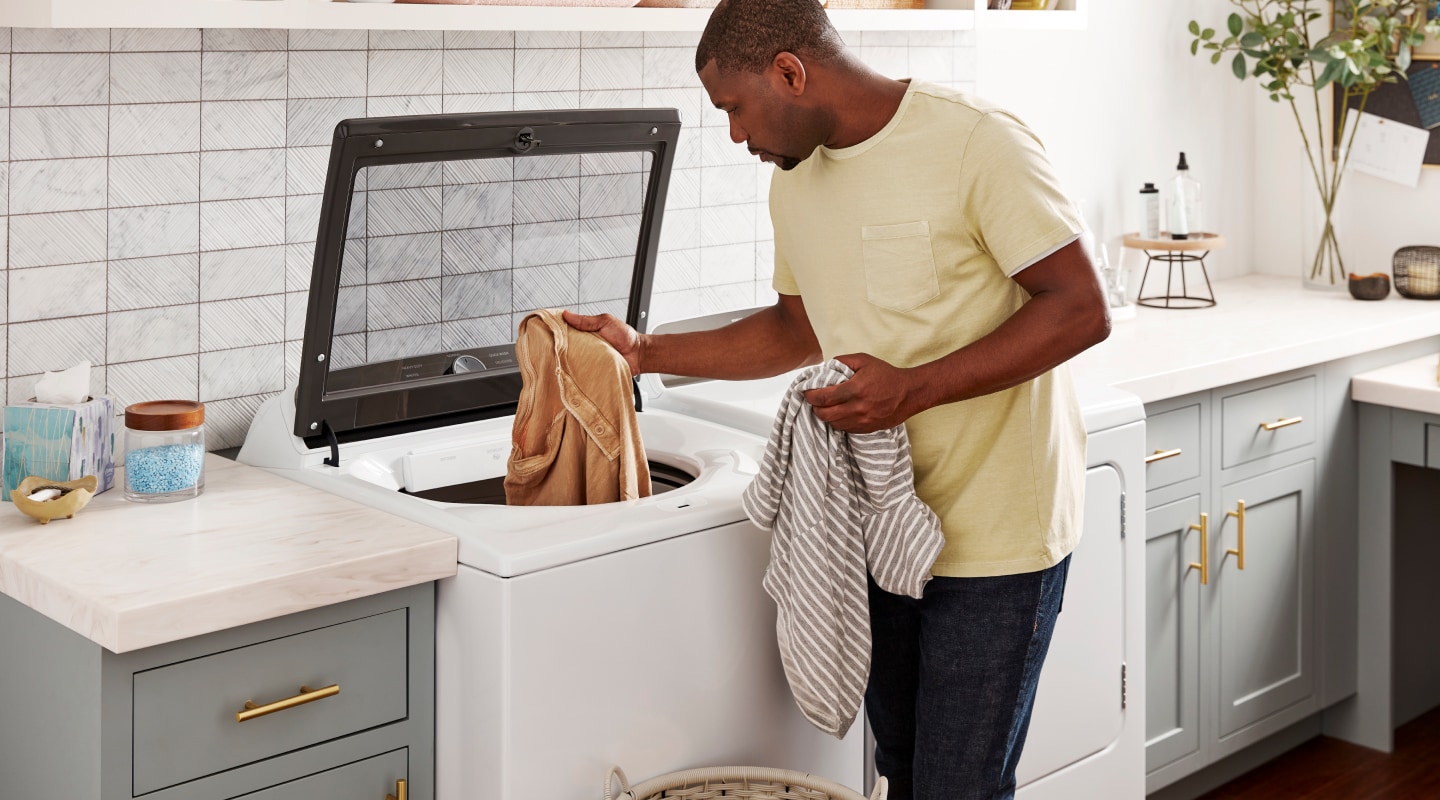

3. Treat your clothes with extra care
Being gentle with your laundry may help preserve fabric quality over time—and in turn, could reduce how often you need to replace items. While results can vary depending on garment and use, treating your clothes with care may be one way to support more sustainable habits. Consider the following steps:
- Read your garment’s care tag to follow the recommended water temperature and wash settings.
- Fasten buttons, zip zippers and empty pockets to help reduce wear.
Sort your laundry by color and fabric type to help avoid bleeding or excessive friction between materials.
For added protection, consider turning garments inside out or using mesh laundry bags for delicates.
When it's time to wash, avoid overloading the drum, and choose a gentle cycle for fragile fabrics.
- Use low heat or air dry delicate items, and promptly hang or fold clothes after drying to help maintain their shape and help avoid wrinkles.
4. Use HE detergent
Using high-efficiency (HE) detergents helps get your clothes clean while producing less suds and using less water than traditional laundry detergent when used in an HE washing machine.
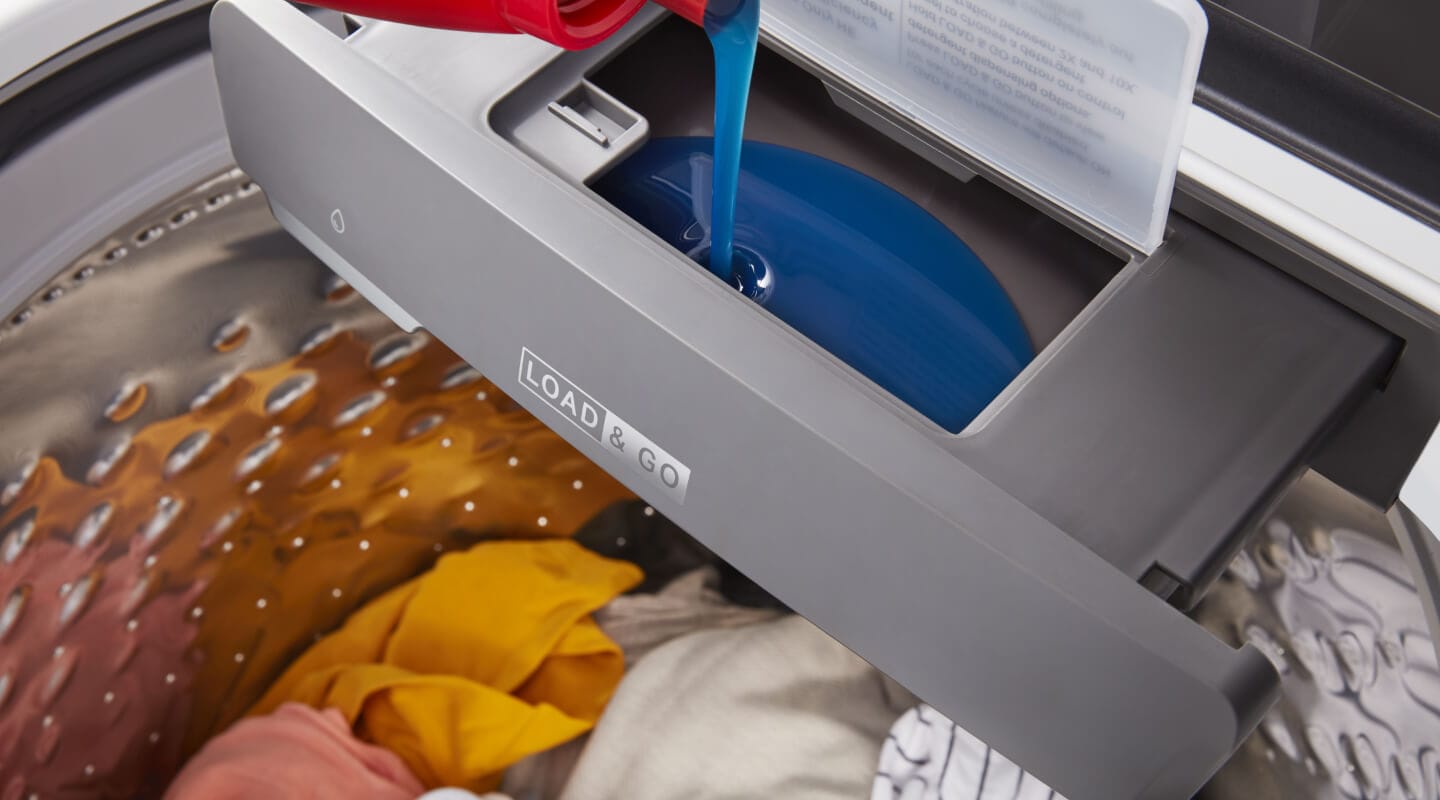

5. Use the right amount of laundry detergent
Using too much detergent can leave residue on clothes and inside your washer, while too little may not get your laundry clean. Using the right amount of detergent can be a good practice for your clothes, your machine and the world around you. Excess detergent can carry chemicals into waterways, where they may harm aquatic life and disrupt ecosystems.
6. Use laundry detergent sheets
Laundry detergent sheets are pre-measured, dissolvable strips of concentrated detergent that offer a convenient, low-waste alternative to traditional options. They're often packaged in eco-friendly materials like paper boxes, making them a sustainable choice.
7. Select cooler water temperatures
Your washer uses more energy to heat water to high temperatures during the wash cycle. Selecting warm or cold water temperatures can cut your washer’s energy usage by half, according to energystar.gov.
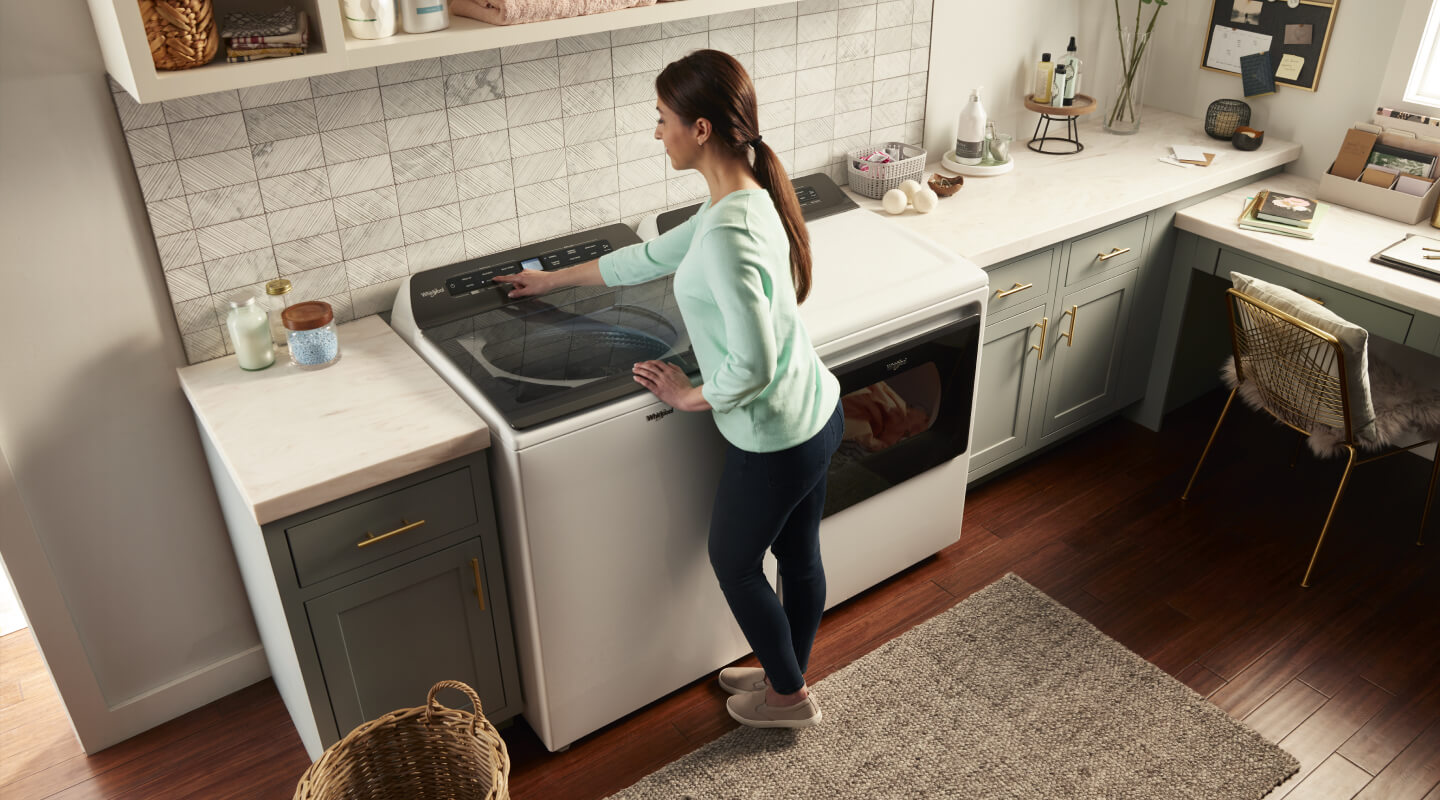
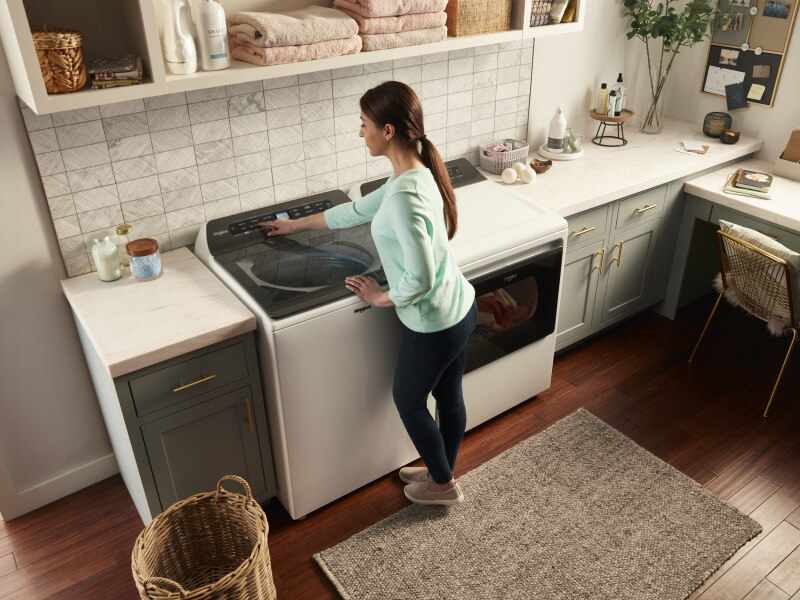
8. Activate an extra spin cycle
Once the wash cycle ends, you can select a Drain and Spin Cycle that removes excess liquid from your clothes using rapid spin speeds. Getting rid of the extra water can help lower the amount of energy your dryer needs to dry your clothes.
9. Always clean the dryer lint trap
Cleaning your dryer’s lint trap before every drying cycle is not only a safety tip, but it can also help improve the airflow inside your dryer to help ensure heat distributes properly.
10. Opt for sensor drying
Timed drying cycles may use more energy than needed to dry your clothes. Opt for a sensor drying cycle that automatically shuts off when your laundry finishes drying.
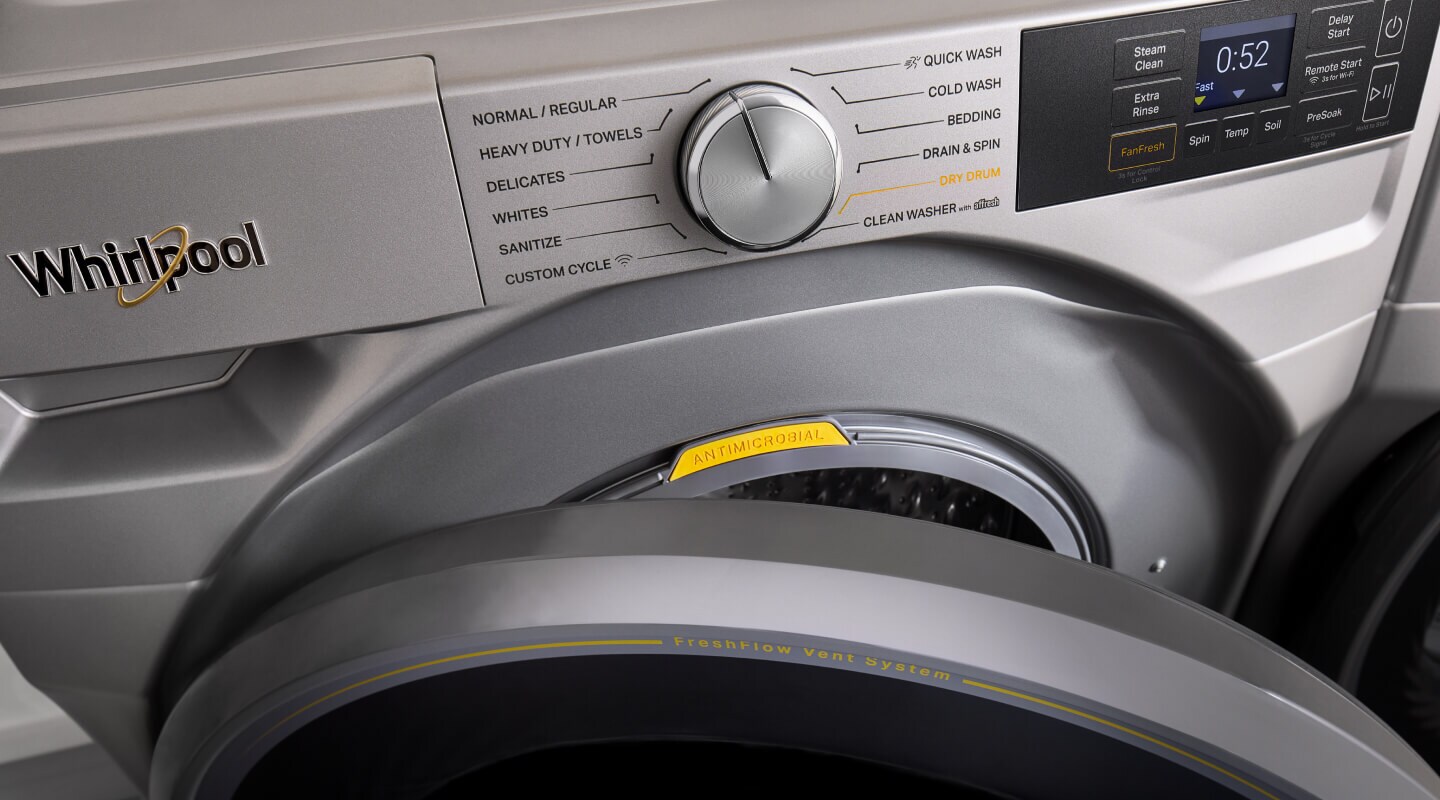
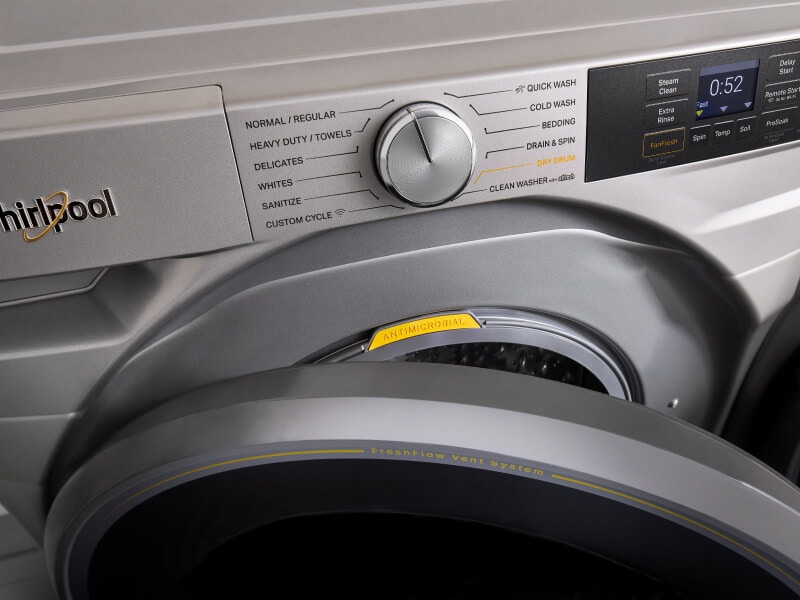
11. Air dry clothes when possible
Air drying your laundry is a simple way to reduce energy use. And in many cases, the fresh air and sunshine can make your clean laundry smell even more amazing.
12. Choose a high-efficency washing machine
High-efficiency washers use less water and energy than older models while still getting clothes clean. They’re designed to work with HE detergent and can help save thousands of gallons of water each year.
Shop Whirlpool® HE Washing Machines
Whirlpool® High-Efficiency Washing Machines are built to help you care for your clothes and your family with features designed for both performance and gentle fabric care. Select models, like this one from Whirlpool brand, include a Deep Water Wash Option to fill the washer to the maximum water level and help rinse away loose soils. Other models, like this one from Whirlpool brand, feature a Load & Go™ Dispenser that automatically senses your laundry load size and adds the right amount of detergent.
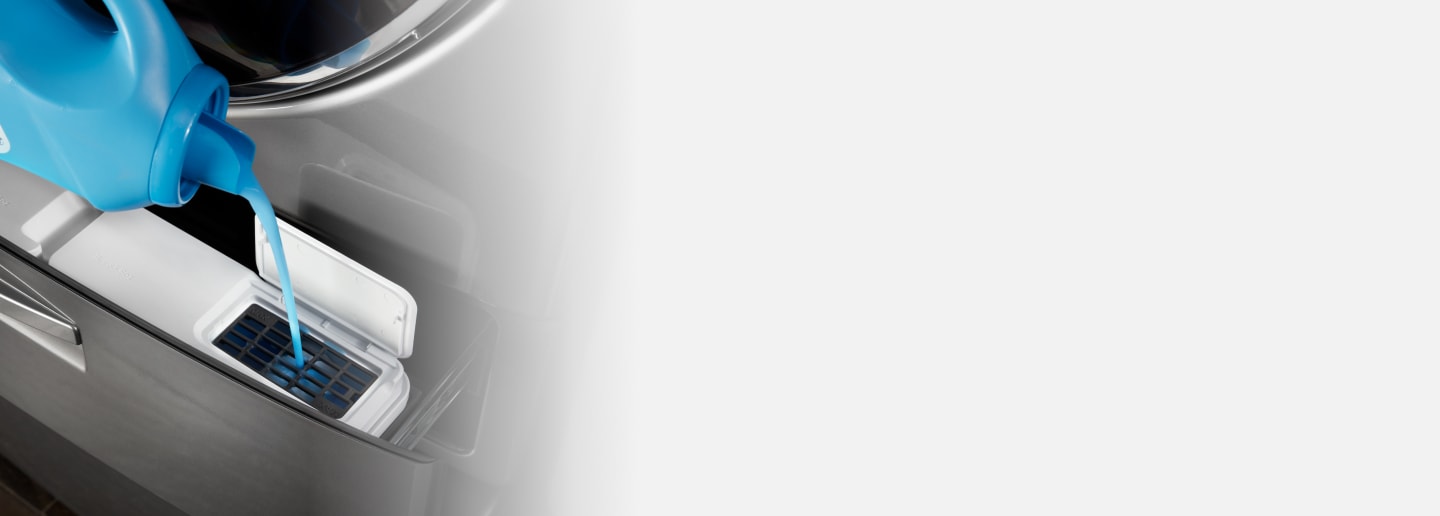
Washers with Load & Go™ XL Dispenser
Add detergent once and skip refills for 40 loads
What are sustainable laundry products?
If you’re looking for laundry detergent, fabric softener or dryer sheets that are greener, check to see if they’re certified with the Safer Choice label from the Environmental Protection Agency (EPA). Products with this label often contain earth-friendly ingredients to benefit you and the environment.
What is eco-friendly laundry detergent?
Eco-friendly laundry detergent may be certified with the Safer Choice label from the EPA after passing strict criteria based on the detergent’s performance, packaging, pH levels and ingredient list. The Safer Choice label indicates that a product is better for the environment.
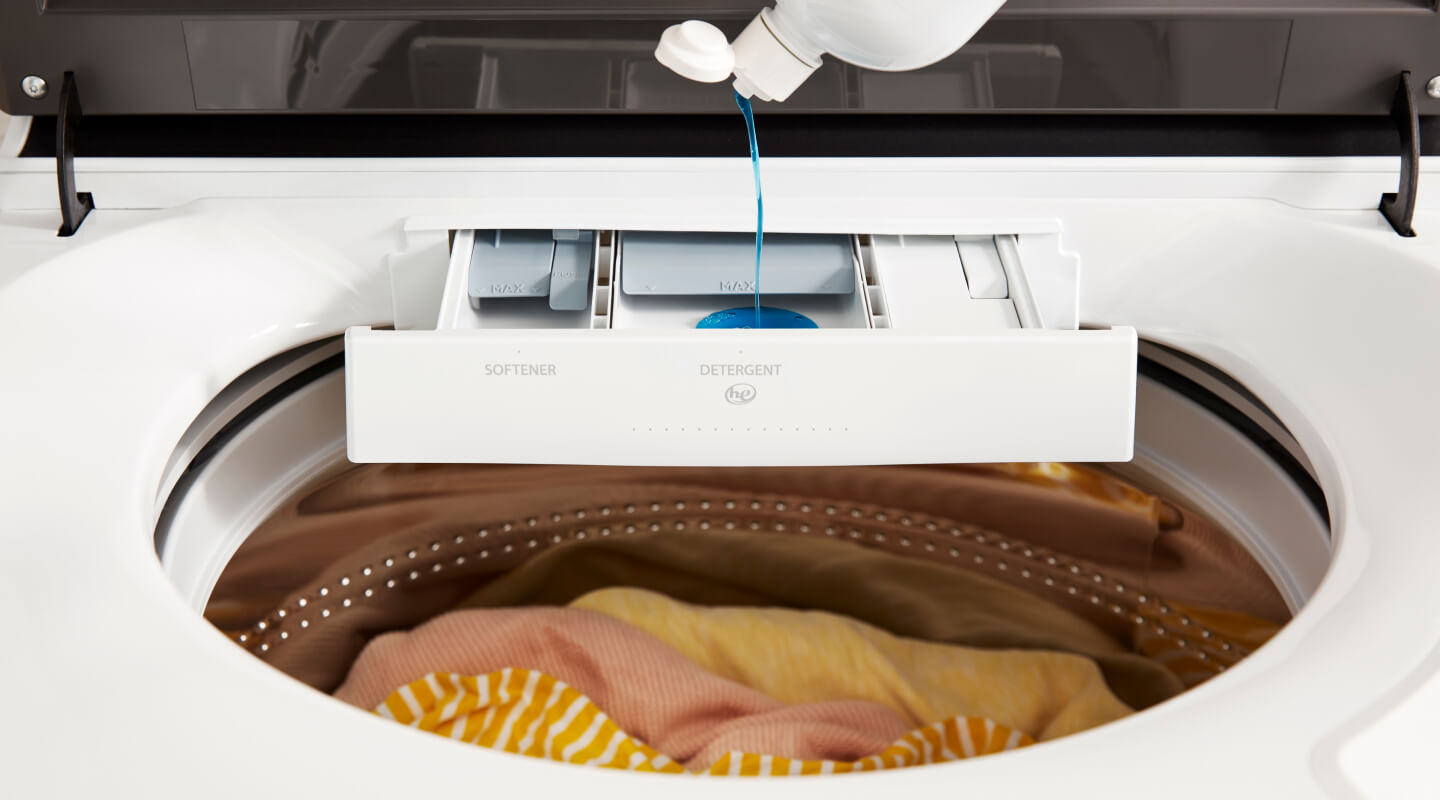
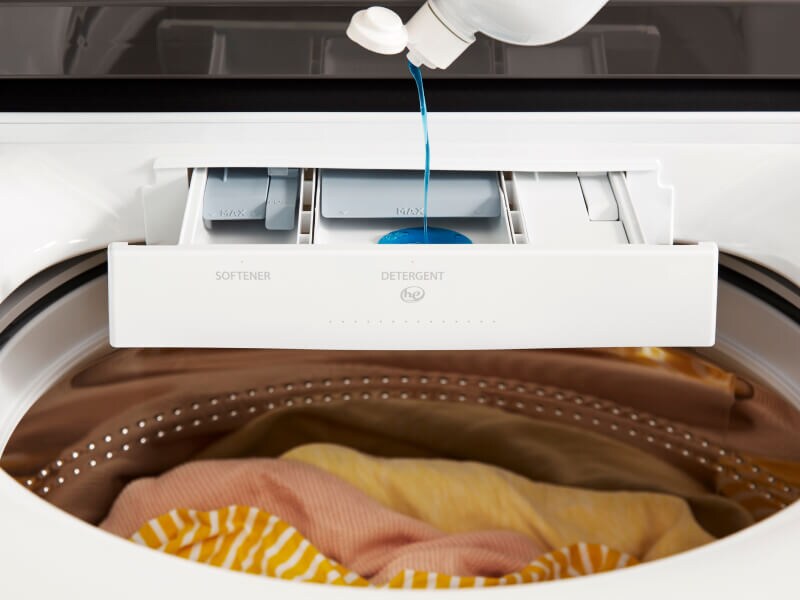
Is liquid or powder detergent better for the environment?
There isn’t a black-and-white answer to which form of laundry detergent is better for the environment, whether it’s powder, liquid or pods. To make sure you’re using an environmentally friendly option, you may have to do some research or check the packaging for the Safer Choice label from the EPA.
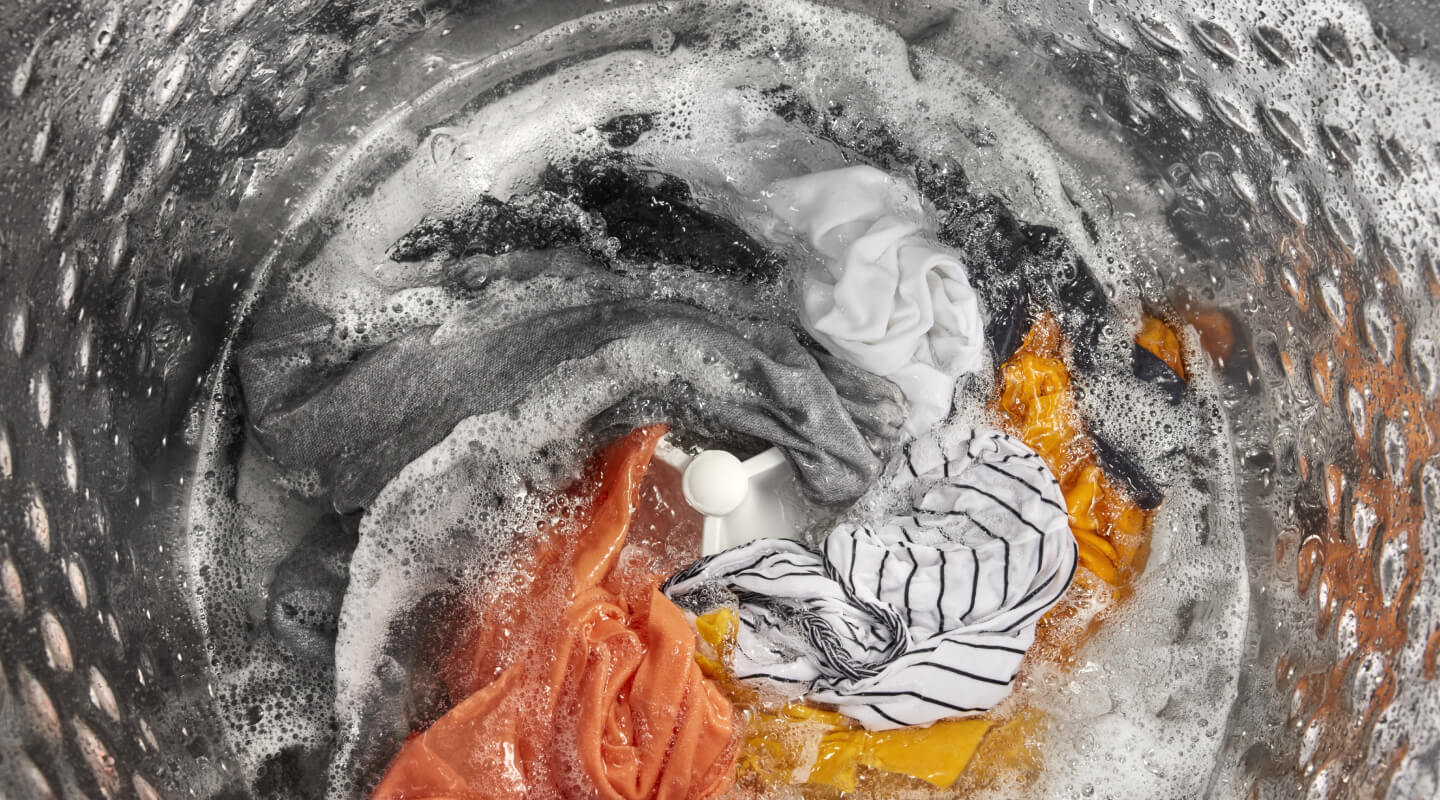
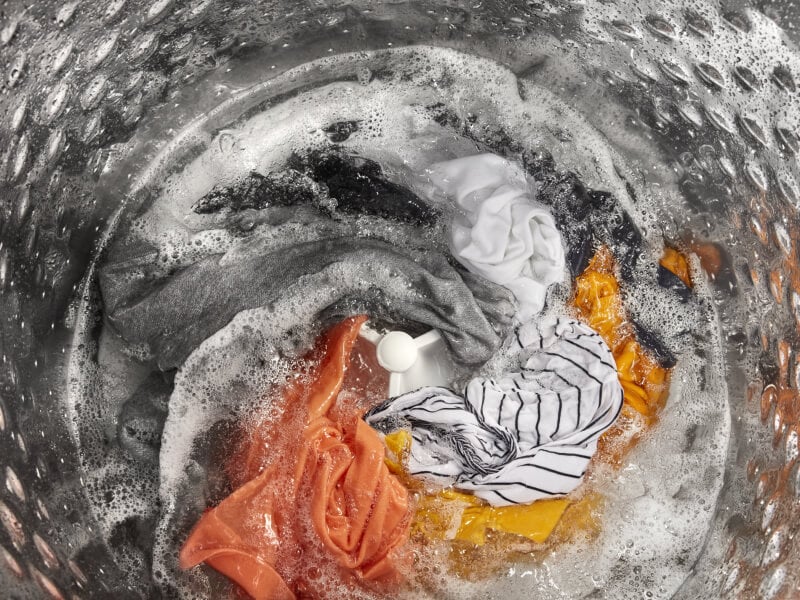
Is it better to do small loads of laundry?
When it comes to washing your clothes, your machine uses around the same amount of energy regardless of load size, so it is recommended to run full loads when you can.
However, load size can impact the water usage of your washing machine. In general, larger loads require more water to clean your clothes compared with smaller loads. Whirlpool® HE top load washing machines use less water during the wash cycle compared with traditional washers.
What is an eco-friendly way to dry clothes?
Although hanging clothes to dry uses the least amount of energy overall, you can help reduce your carbon footprint while still using your dryer. Before you begin drying, give your items an extra spin in the washer to help remove excess water, then dry on low heat to help reduce the energy usage of your machine.
Explore ENERGY STAR® Certified washers and dryers from Whirlpool brand
Whether you’re looking for a Whirlpool® Front Load or Top Load Washer, or a Whirlpool® Gas or Electric Dryer, Whirlpool brand has ENERGY STAR® certified options to help you care for your family. Shop select models with green features like the EcoBoost™ option that uses less heat and extended cycle times for greater energy efficiency, Advanced Moisture Sensing with three sensors that offer added protection against overdrying by detecting both moisture and temperature to adapt drying times and help prevent over-drying, or the Cold Wash Cycle that helps you give your most vibrant colors the care they need.
Was this article helpful? Pass it on
Explore more with Whirlpool brand


home heartbeat
Ready for more tips, home hacks and appliance guides?

